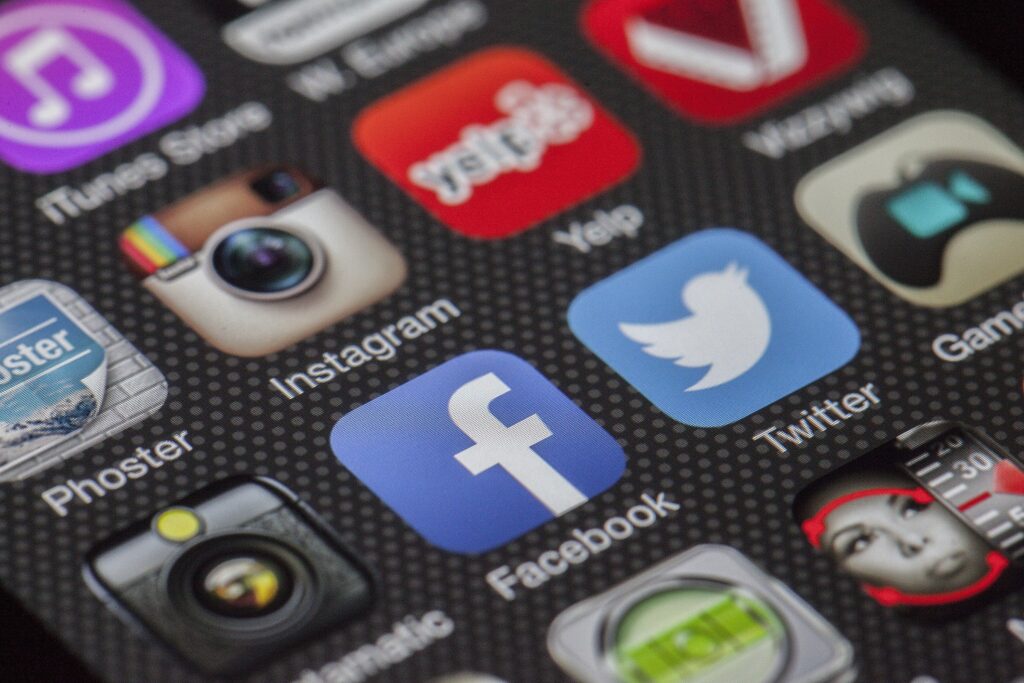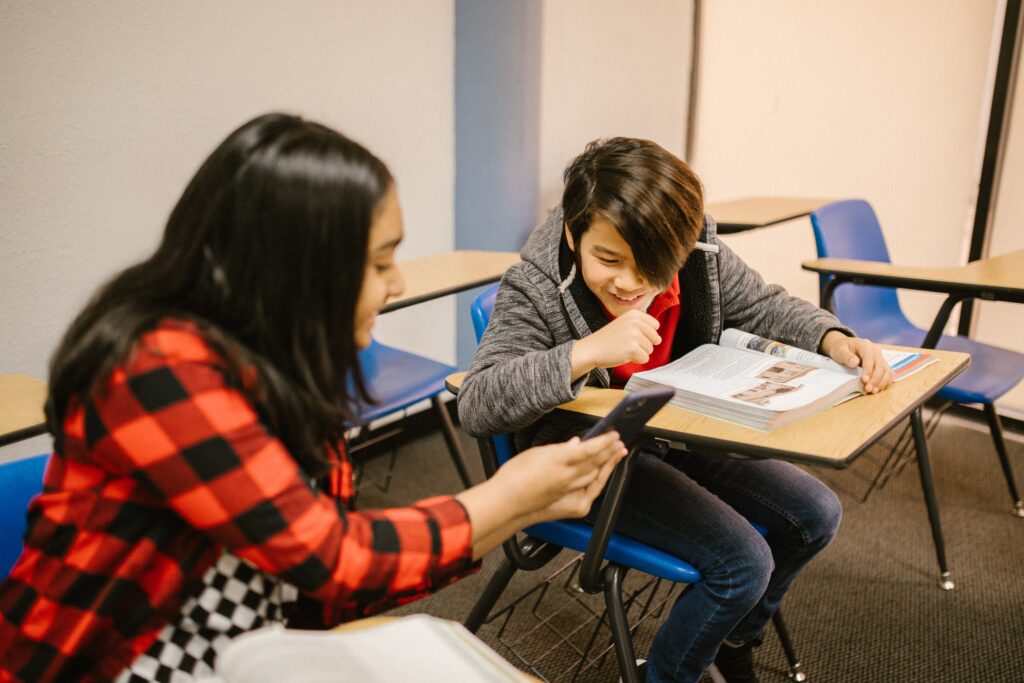In recent years, social media has become increasingly relevant in our lives. Establishing connections with friends and family, to staying up to date on current events. Social media engagement has truly revolutionized the way we communicate and interact with people. In education, we can use social media to enhance learning and make the teaching and learning process more engaging. In this blog post, we will examine the different ways that educators can use social media to create an engaging and dynamic learning environment. We will look at the potential benefits of social media integration in education, as well as any potential drawbacks.
Social media has become a vital part of our daily lives. With more than 4.5 billion internet users around the world, it’s no surprise that social media platforms have changed how we connect and interact with one another. Today, social media has become an essential tool in various sectors, including education.
In the past, the traditional classroom environment relied heavily on textbooks and lectures to disseminate knowledge to students. However, with the advent of social media, there has been a shift towards digital platforms that enhance student engagement and promote collaborative learning.
The use of social media in education has several benefits. It allows educators to connect with students in real time, creating an interactive and engaging learning environment.
Strategies For Integration of Social Media
While social media offers numerous benefits for enhancing education, it is important to implement effective strategies for successful integration. Here are some strategies that can help:
1. Develop a clear social media policy: Establish a social media policy that outlines expectations for appropriate online behavior, including respect for privacy, professionalism, and communication with others.
2. Provide training: Educate students and educators on the effective use of social media, including privacy settings, online safety, and best practices for sharing information.
3. Incorporate social media into the curriculum: Incorporate social media tools into the curriculum to enhance learning and teaching. For example, using social media to share news articles, discuss current events, or collaborate on group projects can help students to engage with the subject matter more effectively.
4. Use multiple social media platforms: Consider using multiple social media platforms to reach different audiences and engage students in various ways. Platforms such as Twitter, Facebook, and Instagram can all be effective tools for enhancing education.
5. Encourage student-led learning: Encourage students to take ownership of their own learning by creating their own social media accounts or pages related to the subject matter. This can foster a sense of community and promote independent thinking.
6. Evaluate the impact: Monitor the impact of social media on education through student feedback, grades, and other measurable outcomes. Use this information to adjust and improve social media strategies in the future.
By implementing these strategies, educators can effectively harness the power of social media to enhance the learning experience and foster collaboration among students and educators alike.

Benefits of Social Media
1. Increased Connectivity: Social media platforms have facilitated communication and connectivity among students and educators. It creates avenues for the exchange of ideas, collaboration on projects, and the ability to ask questions and seek help from peers and experts. This can enhance learning opportunities and foster a sense of community among learners.
2. Access to Information: Social media provides instant access to a vast amount of information and resources. It allows students and educators to stay updated with current events, research, and educational content. Social media platforms like YouTube and educational blogs have become popular sources of tutorials and instructional videos, making learning more engaging and interactive.

3. Global Perspective: Exposure to diverse perspectives through social media engagement can broaden their understanding of global issues and enhance their intercultural competence.
4. Collaboration and Teamwork: Social media platforms provide opportunities for students to collaborate on projects, share resources, and work together remotely from any location. This can boast teamwork skills, especially in virtual learning environments.

5. Enhanced Communication: The use of social media offers various communication tools, such as messaging, forums, TikTok, and video chats, which can improve communication between students, educators, and parents. It allows for quick dissemination of information, discussion of assignments, and feedback on student work.
Negative Effects of Social Media on Education:
1. Distraction: Social media can be highly distracting, diverting students’ attention away from their studies. The constant notifications, scrolling through feeds, and the temptation to engage in non-educational content can lead to decreased productivity and reduced focus on academic tasks.
2. Information Credibility: While social media provides access to a vast amount of information, not all of it is accurate or reliable. This is one of the reasons why any information received through social media must be verified. Students may come across misleading or false information, which can impact their understanding of concepts or lead to the spread of misinformation.

3. Cyberbullying and Online Harassment: Social media platforms can be breeding grounds for cyberbullying and online harassment, which can negatively impact students’ mental well-being and hinder their educational experience. Students may face harassment from peers or encounter inappropriate content that affects their emotional state and concentration.

4. Privacy Concerns: Social media often requires sharing personal information, and students may inadvertently expose themselves to privacy risks. It is crucial for students to be aware of privacy settings and the potential consequences of sharing personal details on social media platforms.
5. Reduced Face-to-Face Interaction: Excessive use of social media can lead to a decline in face-to-face social interactions, which are important for the development of interpersonal skills. Students may become more reliant on online communication and struggle with in-person communication and relationship-building.
In conclusion, social media in education can have positive effects by facilitating connectivity, access to information, and global perspectives. However, it also poses challenges such as distraction, credibility issues, cyberbullying, privacy concerns, and reduced face-to-face interactions. Educators and students need to strike a balance between leveraging the benefits of social media and managing its potential drawbacks.

I definitely in support of that because most children nowadays even trust the media than their parents.
Trust the social media than their parents? This is big. I wish you could throw more light on this. Thanks for your input.
If distractions can be reduced by both students and educators, then the impact of social media on education will be visible.
You are right, Adewale. The distraction is on both sides. Educators should learn how to maximize the use of social media in the classroom by reducing distractions.
Making effective use of social media will definitely redefine the mode of teaching and learning. As educators,we should not be afraid to explore unfamiliar grounds in technology.
Yes. That is true. Educators need to explore technologies that will make their work easier.
Social media will definitely enhance a child’s learning 👌 but parents will have to monitor their children in other to avoid negative effects .
Yes. Supervision is required from both teachers and parents. Thanks for your contribution.
Social Media has made individuals network more. It will enable learners to interact with their peers across the world.
This way, knowledge would be gained and shared.
You are right about that. One of the benefits is collaboration. And collaboration can be done anywhere as long as there is connectivity.
The positive impact of social media on students ‘ academic performance can not be overemphasized but it has to be moderated.
Thanks for this lucid explanations on how social media can enhance learning
Yes, moderation is the keyword. There must be moderation in everything. Thanks for your contribution.
Thanks for your usual contributions.
To achieve the benefits stated in this article, parents will have to play a major role.